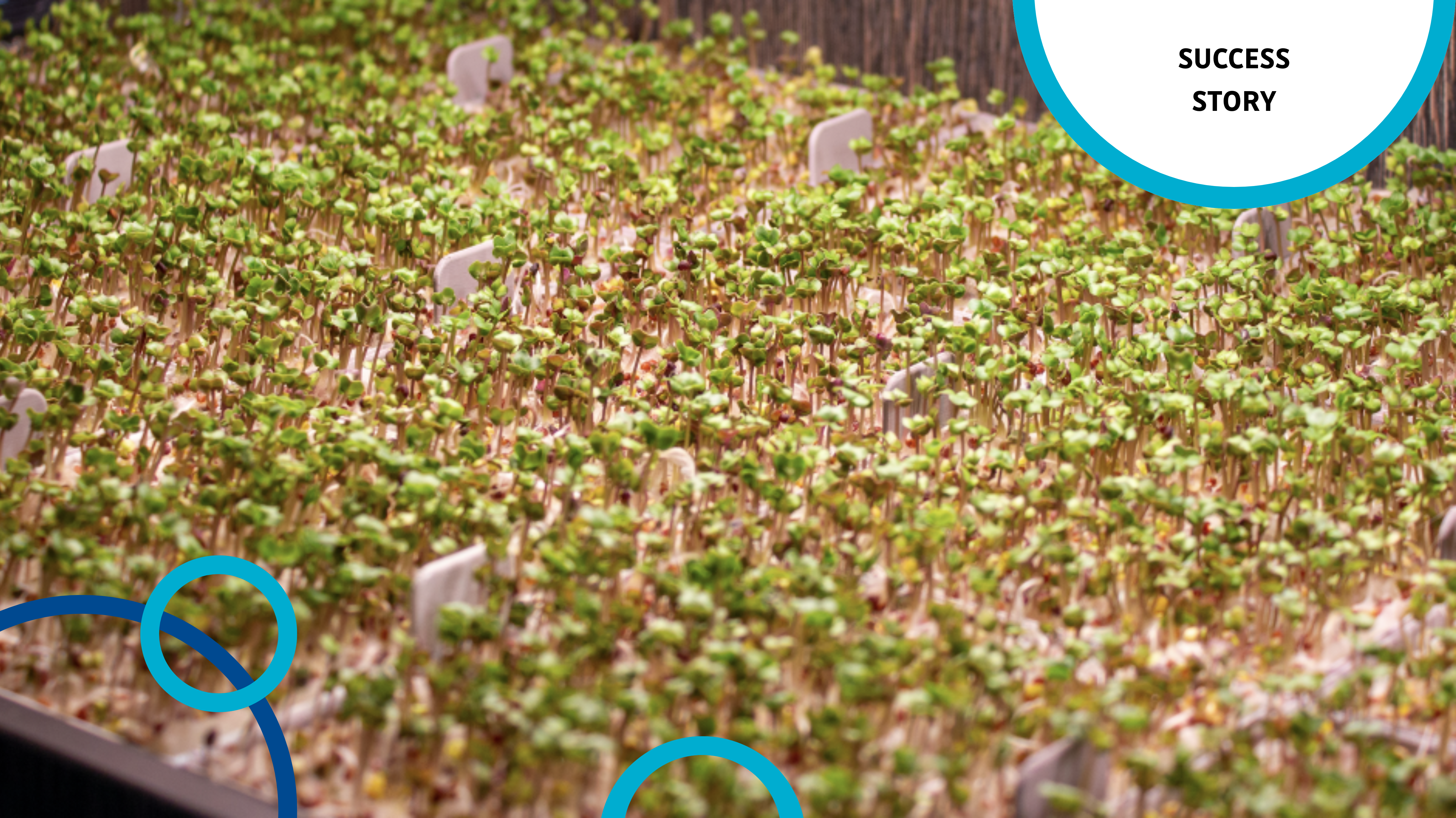Partner: MoraviaLab
Field: agriculture
The cooperation of experts from the Faculty of Electrical Engineering and Computer Science of VSB-TUO with MoraviaLab showed how research and development can be linked to the needs of an innovative company. The result is a growing system that allows companies and institutions to grow their own microgreens directly at the workplace, i.e. efficiently, sustainably, and using smart technologies. Growing vegetables may no longer be the domain of farmers alone, but also of data analysts, developers, and technical universities. As part of the EDIH (European Digital Innovation Hub) project, VSB—Technical University of Ostrava has combined its digital know-how with Moravialab’s innovation potential.
A team of experts from VSB-TUO aided with the design of the sensor system, selecting a suitable control unit, collecting and storing data, and designing options for remote management and monitoring. The result is a technical solution that increases the efficiency of microgreens cultivation and paves the way for further product development and certification.
At the beginning of the project, my colleagues and I were mainly concerned with how to accurately scan the conditions in the growing system: temperature, humidity, light, and water quality. But gradually we got much further, towards remote management, visualisation, and a cloud-based solution. This is exactly what the EDIH is supposed to do, i.e. to show that even smaller companies can use innovative technologies,” says Radim Hercík from the Faculty of Electrical Engineering and Computer Science at VSB-TUO.
MoraviaLab wants to enable people to grow healthy food locally, efficiently, and with minimal environmental impact. The system is designed to be automated and space-saving. It allows microgreens to be grown on-site, without soil, with minimal water consumption, and without the need for agricultural knowledge. The user simply inserts the growing medium with the seed, and the system takes care of the rest: humidity, temperature, light, and irrigation are controlled automatically. In addition, everything is linked to a data dashboard that provides information on consumption, growth, and potential problems.
The development also includes a transparent user interface where key data and statistics can be viewed, either for your own use or as a basis for ESG reports and internal sustainability targets. “Microgreens will both improve the workplace environment and show how much water the company has saved, how much nutritional value it has produced, and how it has performed in terms of its carbon footprint,” explains Zuzana Šitavancová of MoraviaLab.
The project shows that linking innovation with real-life applications can have tangible results. One example is a restaurant in Ostrava, which started testing the system directly in operation. In the future, the system could become part of company kitchens, school canteens, and offices.




